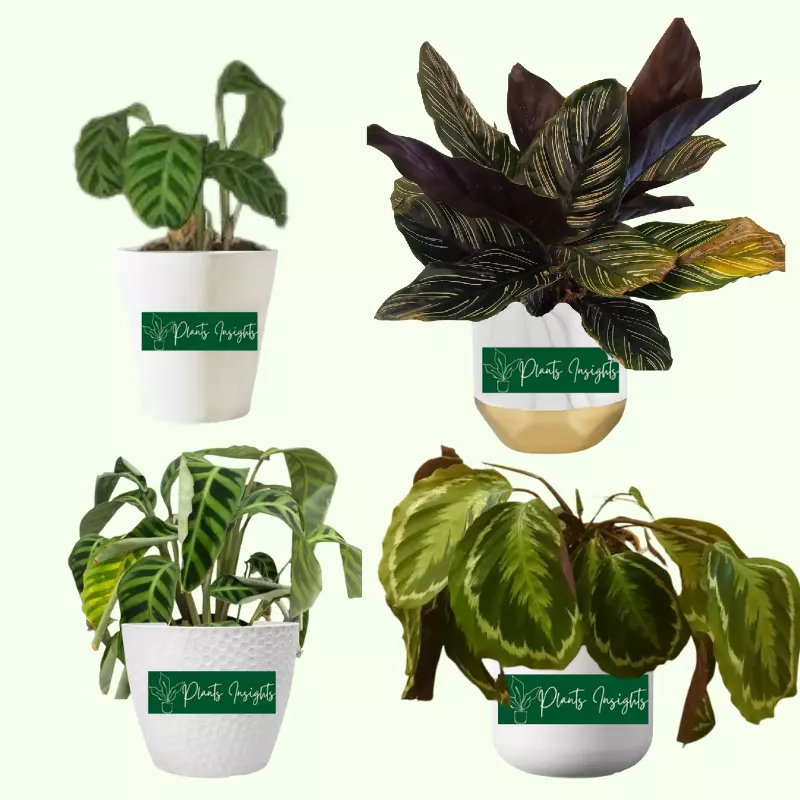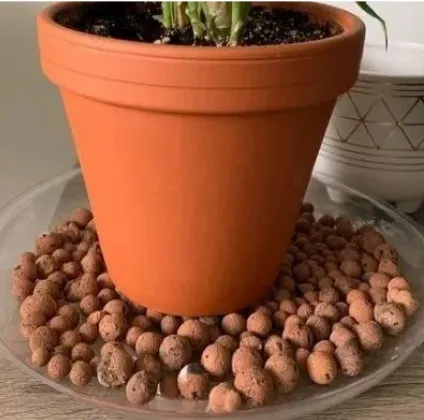Calathea plants are fuzzy when it comes to their care. They will flourish extraordinarily if a favorable environment is provided to them. In the absence of any necessity, Calathea plants will start wilting and greatly suffer. Therefore, you’ll find most Calathea lovers wondering how to save a dying Calathea plant?

Calathea plants are the most beautiful indoor plants hailing from native America and love to flourish in nutrient-rich moist soil with plenty of humidity around them. These beauties grow in Brazilian rain forest, which is hot, humid, and with an annual rainfall of 2000 to 3000 millimeters. This article will provide you with detailed information on why your Calathea plant health is deteriorating and how to recover from diseases.
Prominent Family Members: Calathea White Star, Calathea Leopardina, Calathea Fasciata, Calathea Roseopicta, Calathea Flamestar, Calathea Lutea, Calathea Freddie, Calathea Lancifolia
Essential Products:
How to revive your dying Calathea plant?
There could be several reasons for Calathea’s health deuteriation. The most vital factor is correctly diagnosing the problem and then taking the necessary actions accordingly. In this article, we have included an easy step-by-step guide that you can follow to determine the root cause of Calathea’s degraded health and how to recover the health and make it thrive.
Keep Calathea in a Shaded Area
Mostly plant lovers misunderstand that Calathea plants require bright indirect sunlight to thrive. Calatheas are native to the Brazilian rainforest, where the temperature ranges from a minimum of 77°F to a maximum of 104°F. In the tropical rainforest, the temperature is relatively high at Day time. To give a high-temperature environment indoors, they keep them in the sun’s intense light, which affects plants’ health, and if sun exposure prolongs, plants will lead to death.
The first sign will appear in the form of leaf sunburn. This condition of houseplants is known as scorch or sun scalding. They will become bright red and turn yellow or brown after a day. Moreover, intense sun rays will evaporate all the water from the leaf surface pretty quickly, and the lush green color of the foliage will fade.
If you notice Calathea leaves are wilting, edges and tips are becoming crispy, or their beautiful foliage is discoloring, you have placed them in the wrong place. Immediately move them to the shaded area or place them on a medium diffused light spot. If it’s outdoor, use a plant shading cloth to provide filtered light.

Overwatering or Underwatering
Watering is the most critical factor in Calathea plant care; overwatering or underwatering leads to the plant’s death.
You are likely overwatering your Calathea if you water it more than twice a week. Overwatering can cause root rot which can be challenging to reverse and quickly kill your Calathea plants.
Roots remain healthy when receiving oxygen from the moist soil, and overwatering makes soil supersaturated with water, and roots can’t breathe. Moreover, soggy soil is favorable for fungus attacks, and plant roots will start rooting and effects plants’ overall health. Root rot destroys plant nutrient transport system, and plants can’t get enough nutrients for growth.
Suppose you notice an unpleasant odor in your home near your Calathea it is likely due to the plant’s decaying roots. Your Calathea is probably in poor health when it starts to wilt, curl its leaves, or turn brown or brown at the leaf tips. Later if this situation is prolonged, plants start dying.
If you are watering your plant once a fortnight, the plant is underwatered. If the plant is not getting sufficient water for normal growth, the underwater sign will appear as drooping and wilting of leaves.
To prevent over-watering and under-watering, use a soil moisture meter and water Calathea according to soil conditions. Another way to check pot soil moisture is to insert your finger into the potting soil. If it is dry up to two inches deep, water it; otherwise, water it when the soil is dried up to two inches.

How to save Overwatered Calathea?
If you notice that the Calathea plant leaves are turning yellow and its pot soil is supersaturated with water, you must follow these steps to save your Calathea.
How often should you water your Calathea?
Don’t water your Calathea until you are sure that pot soil is dry up to 2 inches. Use your index finger, put it in the soil, and feel the moisture; if it is dry, then water it. You can use a soil moisture meter if you are not confident with the manual soil moisture assessment.

Calathea Dying Due to Less Humidity in the Air
Although the Calathea plant doesn’t require direct sunlight, what they love to grow is the high humidity around them. Calathea plants are moisture lover plants and flourish in moist soil and the moist air.
The average humidity the Calatheas requires is 50 to 70 percent. Below 50 %, leaves start having crispy brown edges and tips. Prolonging in dry weather affects the Calathea plant, the water evaporates from the leaf’s surface, and they start wilting and drooping. In the end, plants die due to the arid atmosphere.
To keep your indoor plant lively and fresh, maintain the humidity level of more than 50 % indoors but best if you can keep them in a 70 % humid area.
To maintain the humidity level, you can use these four methods to save your plant from dying due to dry weather.
Plant humidifier
Plant humidifiers are best to increase the humidity in the surroundings where plants thrive indoors. The good thing about a plant humidifier is that it produces and maintains the humidity level up to a certain level. Most humidifiers have auto-cut on/off switches to maintain the required humidity.
Gathering indoor plants
If you do not intend to use a plant humidifier, gather all humidity-loving indoor plants in a corner and place your dying Calathea in between. Plants naturally evaporate the water in the form of vapors called transpiration. Humidity around the plants is more because of transpiration, and the plant will get the required humidity from the surroundings and start thriving again.

Pebble tray with water
A homemade humidifier is another method to save your dying Calathea due to dry surroundings. It’s a simple and economical way to provide humidity to dying Calathea. Please take a deep tray and fill it with pebbles or stones, and pour water into that tray.
Make sure that half of the stones are out from the water and place the dying Calathea plant pot on the stones. Don’t let the pot base in contact with water; otherwise, water will seep into the soil from the drain hole and make the soil soggy, which is detrimental to plant roots.

Misting
Frequent misting of two to three times a day can fulfill the humidity requirements. However, it is a time taking and less effective manner. Furthermore, do not let the water droplets stay for long on the leaves as it can invite leaves fungal diseases.

Temperatures fluctuation
Another factor that harms and can kill your Calathea plant is your indoor temperature. Calathea hails from the hot and humid region of the tropical rainforest of Brazil and is less tolerant to cold temperatures. The best temperature to keep Calathea healthy is 65 to 80° F.
Calathea plants can tolerate short-term exposure to temperatures more than 80°F if humidity is above 60 %. Long-stay above 80° F can harm plant growth and health.
In addition, it’s easy to detect that plant is overstressed due to cold weather. Calathea leaves show yellow, white, or red spots near the veins.
Furthermore, the plant leaves start drooping and curling, and the plant will lose its rigidity when the temperature is below 60° F. Move it to a warm place, and it will recover soon from the damage caused due to cold draft. After several hours of exposure to warmer temperatures, your plant would be in good shape.
Calathea doesn’t need to be outside in winter to feel cold shock; even with the windows shut, cold drafts, such as those of an air conditioner, could cause shock-related symptoms. However, they won’t be as severe.

Plant Disease and Pests
Most commonly, the fungal disease which affects the Calathea plant is root rot caused due to overwatering. The first sign of root rot is that the leaf turns yellow near the soil, and the stem starts losing its rigidity.
To cure the plant of root rot, bring out the plant from the pot, remove all the infected soil from the roots, wash the roots with water, and cut away all the rotted roots. Spray the roots with fungicides and replant the Calathea in a new pot with moist soil.
If your plant’s requirements are perfectly fulfilled, your Calathea plant is still dying. Thoroughly check your plant carefully, especially the lower side of the leaves and stem joints. It might be your Calathea plant has been invaded by some pests.
Pests that usually love to make colonies on Calathea are spider mites, fungus gnats, Aphids, and Mealybugs. A sign of a pest’s attack on a plant shows a white powdery substance on leaves and stems. At the same time, webs on the leaves and stems indicate that spider mites are sucking leaves sap and can reach up to the plant cell and become the reason for plants dying.
Spider mites can easily be controlled by neem oil; however, use suitable pesticides to control the pest attack if the attack is intense.
Pest spreads so quickly to the other part of the plant and even to the other indoor plants, so rapid action and following treatments can be done to stop their spread.
Rubbing alcohol
Pour some alcohol onto a cotton swab and rub it on the underside of your Calathea’s leaves. The spider mites will soon disappear.
Rosemary oil spray
Spider mites dislike the rosemary oil. The oil extract can be used as an insecticide and is effective for spider mites treatment. Be sure to dilute the oil with one-quarter of water.
Apple cider vinegar
A good, old-fashioned apple cider vinegar could help with the spider mite issue. Pour a gallon of water into a spray bottle. Add two drops of dishwashing liquid, a tablespoon of baking soda, and 1/4 Cup of Apple Cider Vinegar. The mixture will be far too acidic for the spider mites.
Neem oil
Neem oil is an excellent pest repellent. You can apply neem oil directly to the leaf with a clean cloth or make an insecticide by taking a glass of lukewarm water and adding one tablespoon of Castille soap and two teaspoons of neem oil. Spray this mixture on the infected part of the plant.
Frequently Asked Questions
Should I cut dead leaves off Calathea?
Yes, you shall prune or cut the dead or diseased leaves of your Calathea. Removing unhealthy leaves will improve the plant’s appearance and direct the plant’s energy and nutrients towards new growth.
How long does it take to revive a Calathea?
It will usually take a couple of months for Calathea to develop new roots and foliage and completely recover from a disease. Therefore, you shall be patient and keep providing your Calathea with a favorable environment of warm temperatures, high humidity, and low to medium indirect sunlight.
Why is my Calathea plant dying?
Calathea plant health deterioration can be due to multiple reasons. You shall closely inspect and look for the symptoms to find the right reason for sickness. Yellowing of leaves indicates over-watering or rotting of roots in an extreme case.
Crisp leaves and browning at edges point to a lack of humidity, whereas curled and drooped leaves exposure to high and low temperatures, respectively,
Why has my Calathea got brown tips?
The Calathea leaves can turn brown due to two reasons. It could be because of a lack of humidity or mineral presence in your tap water. To avoid the brown tips, you can provide adequate humidity of around 60% to your Calathea and water the plant with distilled or rainwater.
Conclusion
Calathea plant dying has multiple causes. With good care, you can save it from dying and revive it back to thrive extraordinarily by providing a copycat environment of the native land.
If you keep an eye on your Calatheas and think critically about any issues that may arise, I am sure you will be able to solve most issues before Calathea dies.

